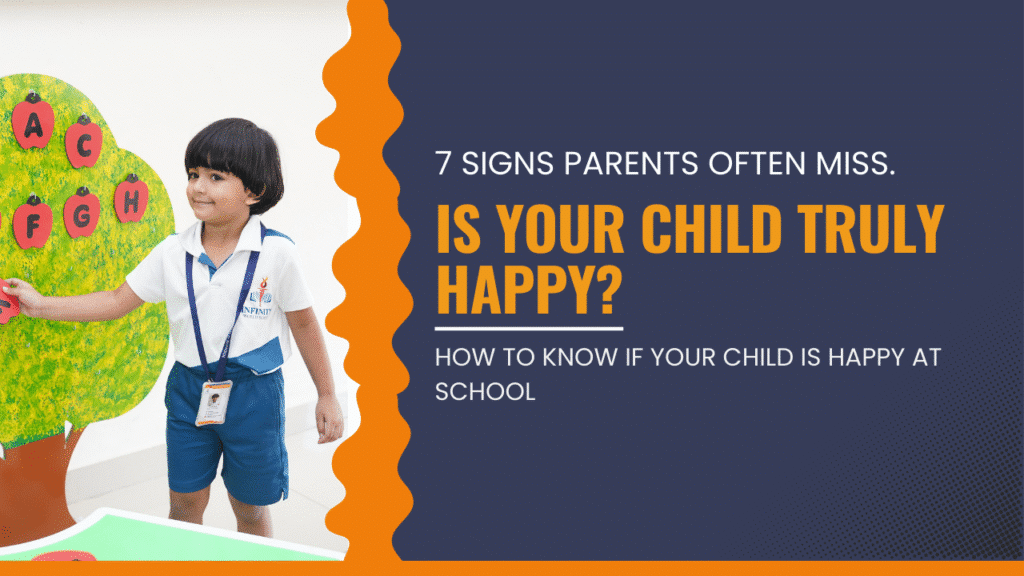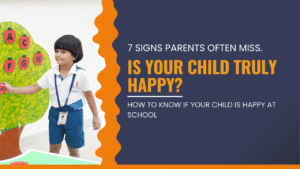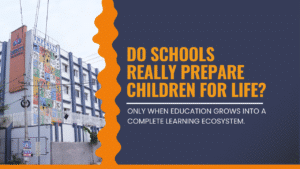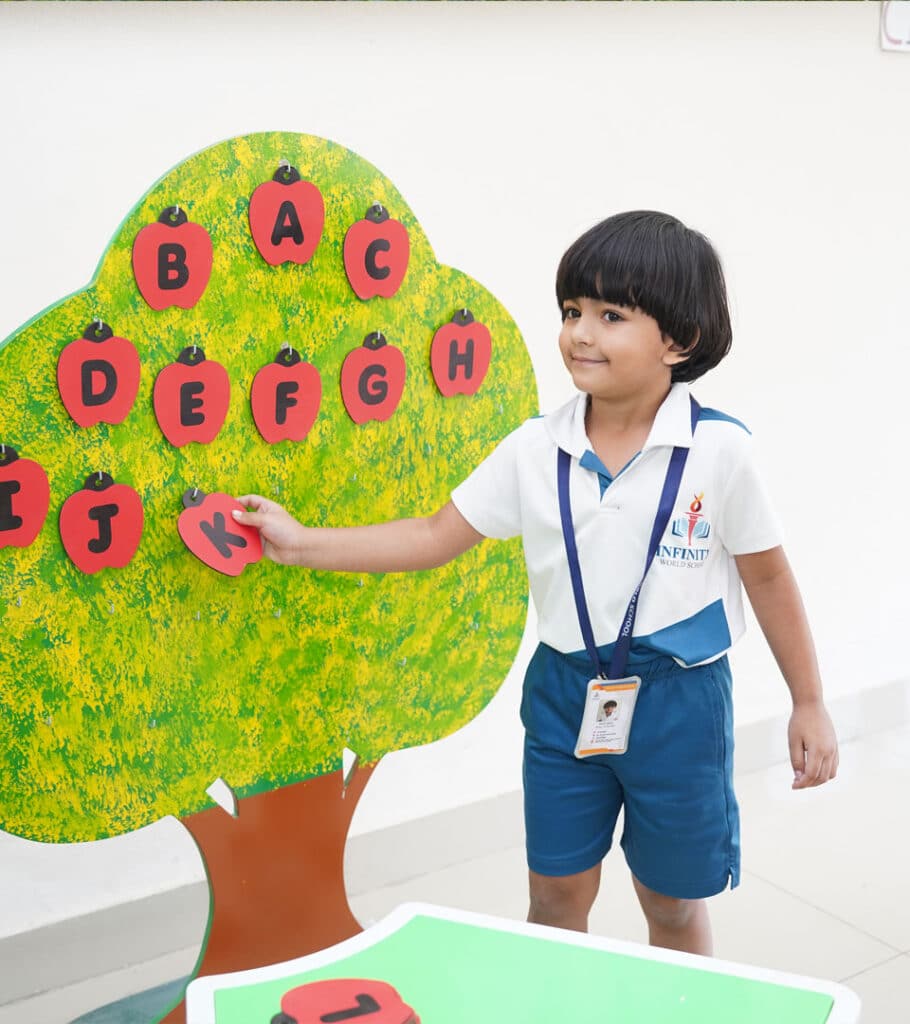Introduction
When parents think about their child’s schooling, academic results and attendance often come to mind first. But equally critical—yet less visible—is emotional well-being at school. Feeling safe, valued, and engaged emotionally shapes how children learn, develop resilience, and grow socially.
In the rush of homework, commuting, and daily routines, subtle signals can be overlooked. A brief comment at the dinner table, their quiet posture after class, or an innocent remark about a friend might reveal more than exam scores.
This article explores seven often-missed signs that your child feels truly content and emotionally secure at school. Based on child development insights and classroom psychology, these indicators help parents tune into what really matters. And while any school can aim for these outcomes, forward-thinking, child-centric CBSE schools design reflective classrooms, peer-focused systems, and supportive environments to foster them naturally.
Understanding these cues supports not just academic success but deep-rooted happiness every school day.
1. They Bring School into Conversations Naturally
Many children don’t proclaim, “I’m happy at school”—but they reveal it by sharing small moments unprompted.
When a child casually tells you about a class game, a neat drawing they made, or a lighthearted moment with a friend, it signals that school is emotionally important to them. This natural storytelling reflects psychological safety—the feeling that what happens at school is worth talking about.
Children who view school as emotionally safe tend to integrate it into their personal narrative. Educators reinforce this by pausing for reflection at the end of class or maintaining “circle time” where kids share highlights.
What to notice:
- Do they say things like, “Today in art…” or “Guess who sat with me at lunch?”
- Do they describe their day with emotional language—like joyful, funny, or surprising?
- Are these moments part of your everyday conversations?
2. They Maintain Stable Friendships and Speak Well of Teachers
Belonging to peer groups and feeling connected to adults forms the backbone of school well-being.
When your child talks affectionately about classmates or mentions friendships that persist over time—for instance, “I teamed up with Ria again in lab”—it shows social integration and trust. Similarly, referencing teachers in a positive, respectful tone (e.g., “Mrs. Kumar helped me when I didn’t understand fractions”) signifies emotional safety and relational warmth.
Child psychologists underscore that strong peer and teacher bonds boost self-esteem, reduce anxiety, and encourage social growth. In classrooms designed with friendly peer systems, buddy mentorships, and accessible teaching staff, these connections are nurtured deliberately.
What to notice:
- Are the same classmate names recurring as friends?
- Do they talk about teachers’ kindness, humor, or help?
- Are conflicts between friends resolved constructively rather than avoided?
3. They Carry Confidence Even When Facing Challenges
True school happiness isn’t about things always being easy—it’s about feeling equipped to handle difficulty. A child who says, “I didn’t get the answer right, but I’ll try again tomorrow,” is demonstrating resilience and emotional security.
Developmental research highlights that learning persistence hinges on positive responses to struggle. When classroom cultures encourage respectful risk-taking and normalize mistakes as part of learning, students develop confidence even in tough moments.
Child-centric schools often do this through personalized learning plans and reflective guidance: students learn that effort matters more than perfection.
What to notice:
- Do they express statements like, “I found that hard, but I’m working on it”?
- Do they ask for help—whether from peers or teachers—when stuck?
- Are mistakes discussed calmly rather than punished or hidden?
4. They Show Genuine Curiosity About School Activities
Curiosity isn’t just academic—it’s emotional too. When your child brings home extra questions—about historical events, science experiments, or upcoming events—it signals a genuine engagement with their learning environment. Even non-academic curiosity—like wanting to show off a drawing or practice a song—reflects joy in creative expression.
Psychologists link curiosity with positive emotion and cognitive flexibility. Schools that embed project-based learning, cross-disciplinary inquiry, and opportunities for hands-on participation invite children to investigate and share enthusiasm.
What to notice:
- Do they ask questions like, “Can we explore more about this?” or “Can I show this to my classmates?”
- Are they finishing parts of projects at home because they want to?
- Do they express excitement about different activities—arts, sports, debate, or science?
5. Sleep and Eating Habits Stay Consistent
What happens in the mind often shows up in the body—a principle well-known in child psychology. Disrupted sleep or changed appetite—especially on school nights—may reveal underlying stress.
Conversely, a child who maintains a routine—goes to bed without night-time anxiety, wakes up rested, eats their school meals—is more likely to feel emotionally balanced. Food, rest, and energy are foundational to mood and engagement.
Supportive school environments support consistent rhythms through predictable schedules, healthy lunch breaks, and occasional downtime. When children feel regulated, their bodies reflect that calm.
What to notice:
- Are their sleep and mornings calm—even before school?
- Do they eat regularly during the day without complaints?
- Do they show steady energy—not sapped by overwhelm?
6. They Ask to Join School Events or Clubs
When children request to join activities—like a cultural club, sports team, or dance group—that’s a sign of emotional investment in their school life. They want to contribute, participate, and connect.
Developmental experts highlight that this sense of agency—being invited and empowered to join—boosts motivation, identity, and belonging. Schools that create inclusive activity structures, student councils, and elective clubs empower children to explore and commit.
Signs of true well-being include asking to stay for a rehearsal, volunteering for responsibility, or discussing roles in upcoming events.
What to notice:
- Do they ask to take part in extras—even if it means more time?
- Do they plan around school events with enthusiasm?
- Do they show pride in being part of a group?
7. They Look Forward to Going to School
This sign is subtle but powerful. A child may not announce, “I want to go to school,” but body language and demeanor at the door—like tying shoes without complaint—can reveal emotional anticipation.
Feeling excited, even mildly, about seeing friends or starting the day is a quiet testament to school being a meaningful, safe, and engaging space. Schools that foster this attitude design welcoming arrival routines, friendly morning interactions, and environments that greet children with warmth and structure.
What to notice:
- Do they walk to school excitedly—or leave reluctantly?
- Are mornings brief and smooth, with fewer delays and tears?
- Do they pause positively—smile on arrival, greet classmates?
Why Environment Matters
The way children navigate school life isn’t rooted solely in their temperament—it’s shaped by the environment they enter daily. Classroom emotional tone, peer dynamics, and physical safety all contribute to how children feel inside.
When schools use child-centered classrooms—where teachers listen, reflection is encouraged, and students help each other—they create a fertile space for emotional well-being. Accessible teachers, consistent routines, and spaces for art, movement, and rest invite children’s natural rhythms to flourish.
In research-informed CBSE schools, this isn’t mere added value—they’re considered essential. By integrating mental wellness programs, empathetic pedagogy, and emotionally intelligent culture, schools create environments where happiness becomes a spontaneous outcome—not a goal.
When to Be Concerned
Most children bounce through daily ups and downs. But certain persistent patterns warrant attention:
- Refusal to go to school, or stomach aches every school morning
- Prolonged sadness, anxiety, or tearfulness around school events
- Social withdrawal or drifting away from once-loved peers
- Frequent physical complaints (headache, stomachache)
- Sleep or appetite disturbance tied to school days
When these red flags appear, open communication with educators is key. In thoughtful schools, parents are warmly encouraged to connect with teachers or counselors and work together toward support.
Conclusion
Happiness at school isn’t always dramatic—it’s often whispered in a shared joke, steady routine, gentle posture, or friendly hello. These subtle, consistent behaviors are more meaningful than one-time declarations.
As parents, staying observant, listening without judgment, and trusting your intuition can help you tune into how your child truly feels. Schools that understand the emotional dimension of learning—like Infinity World School—tend to build environments where children naturally flourish.
To better understand how such emotionally supportive environments are crafted, feel free to visit our campus or connect with our academic team. Learning happens best when children feel safe, seen, and inspired—and that’s where real happiness begins.
















